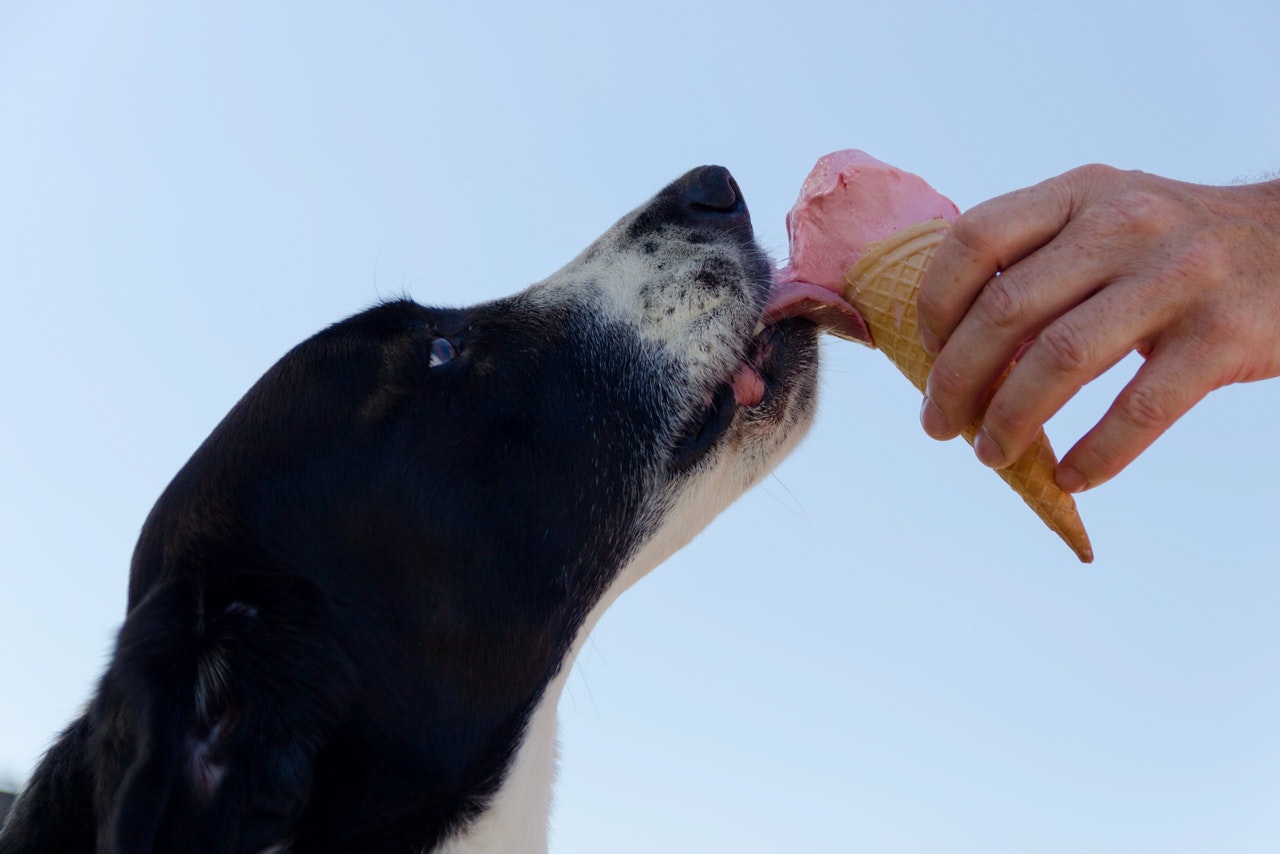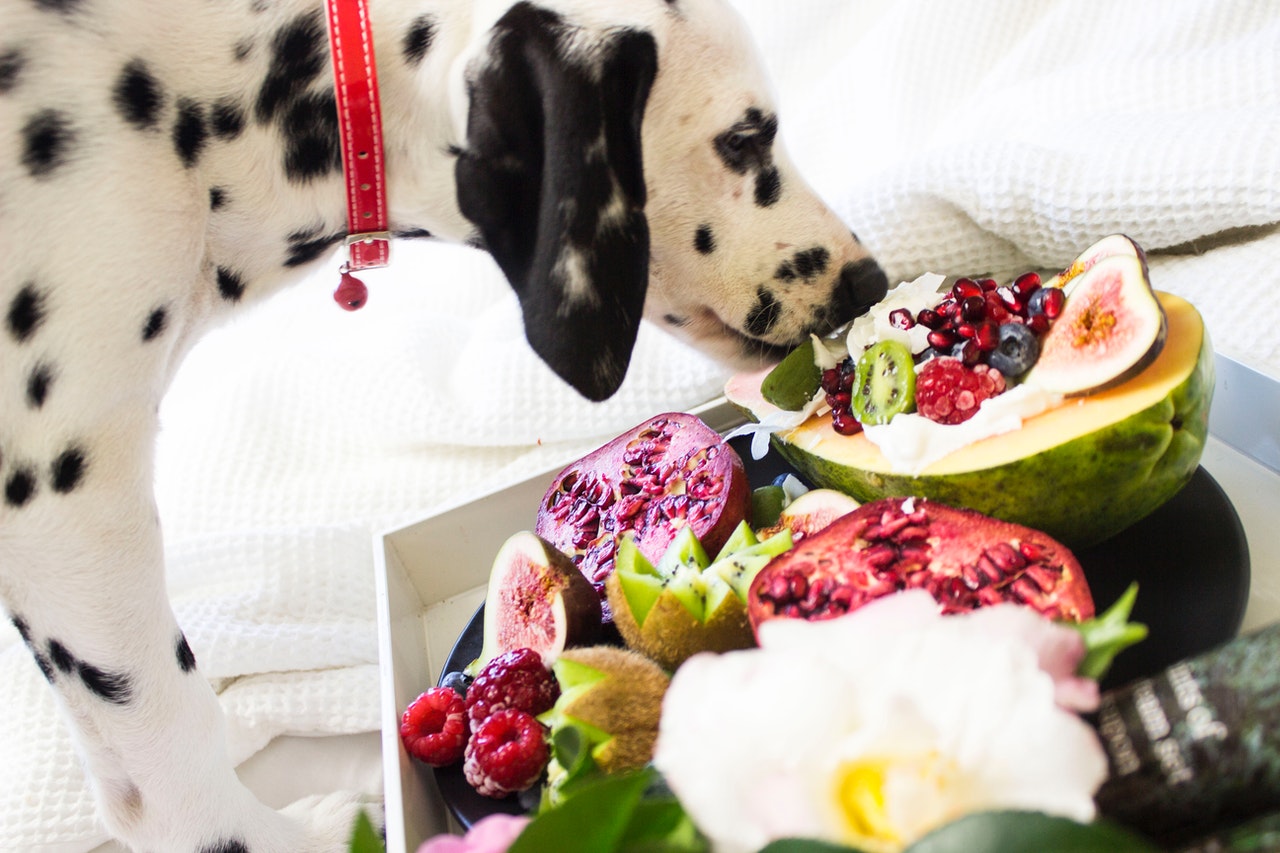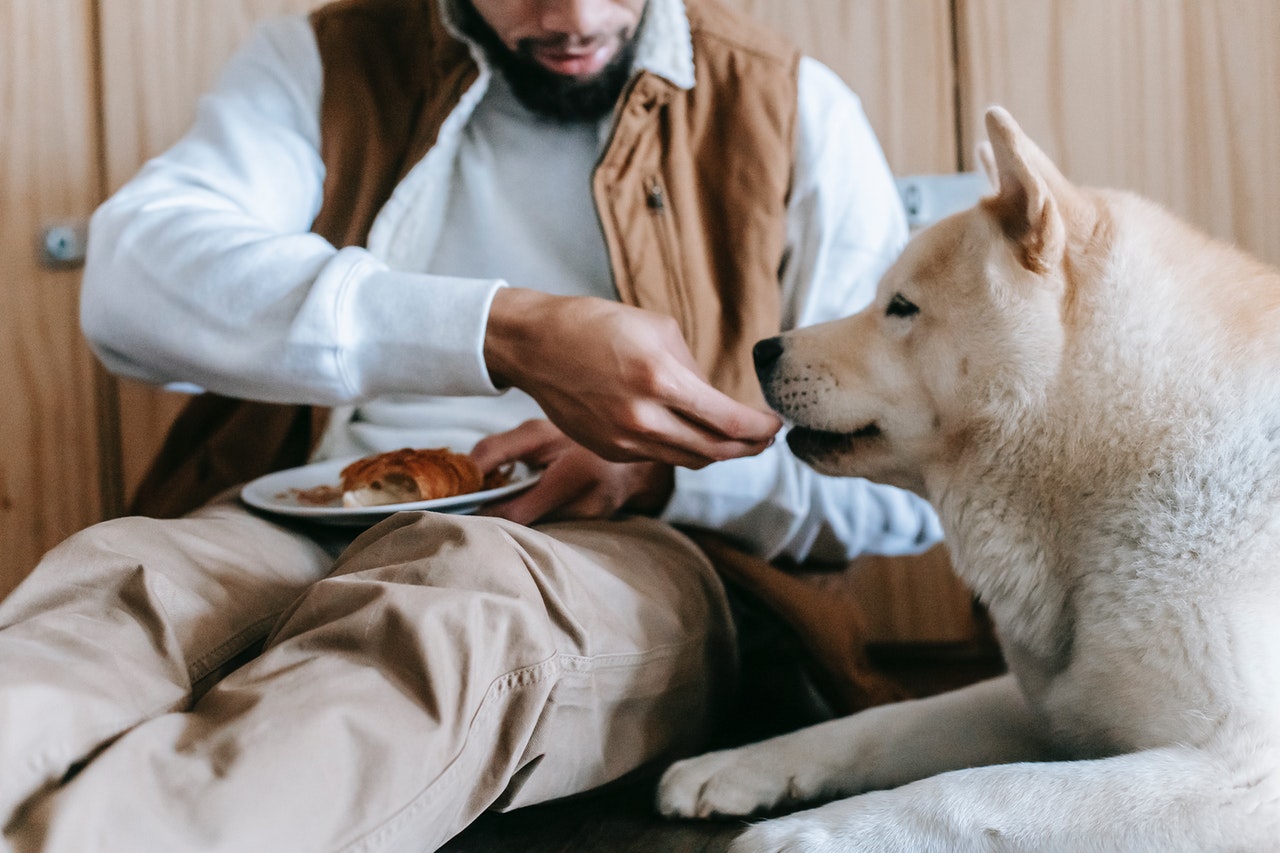You share a lot with your dog — playtime bonding sessions at the park, cuddle time on the sofa, and more — so it’s only natural to want to share a snack or two. While some people food is perfectly safe for your pup, there are also numerous human foods that are toxic to dogs you should know about.
We’ll provide a list of toxic food for dogs, so you’ll always have a quick reference guide on hand before you share a treat with your pup. (You may want to print out the list and hang it on your refrigerator to make sure everyone in the family sees it.) Here are foods you should never feed your dog.

1. Alcohol
Dogs who ingest alcohol may suffer from moderate symptoms of intoxication, such as slight disorientation and depression, but alcohol can also cause severe diarrhea, seizures, shaking, and vomiting. Alcohol poisoning affects dogs within as little as 30 minutes after consumption, so take care not to leave alcoholic drinks unattended and clean up any spills right away.
2. Avocado
Avocado toast may be your go-to breakfast, but you’ll want to resist the urge to share it with your pup. Avocado leaves, skins, and pits contain a toxic substance called persin, which can be fatal if ingested. The flesh of avocados also contains trace amounts of persin, but because it can cause diarrhea, vomiting, and heart damage, it’s not worth the risk. Lastly, avocado is a high-fat food, which can cause weight gain, digestive issues, and even pancreatitis.
3. Candy, specifically chocolate and candies containing xylitol
Chocolate contains theobromine and caffeine, both of which are toxic to dogs. Theobromine and caffeine are part of a chemical group known as methylxanthines, which can lead to tremors, diarrhea, vomiting, seizures, increased heart rate, and potentially even death if ingested in large quantities. Xylitol, on the other hand, causes dangerously low blood sugar, seizures, liver failure, and possibly even death.
4. Coffee, tea, and caffeine pills
You may love a cup of hot coffee in the morning, but your morning joe is incredibly dangerous to your pup. Caffeine causes vomiting, diarrhea, high blood pressure, and cardiac arrhythmia, which can be fatal if left untreated. Keep your dog away from tea, too, and caffeine pills should never be stored where your dog can access them.
5. Garlic and onions
Garlic and onions, two of our favorite ingredients for flavorful meals, contain thiosulfate, a compound that’s toxic to dogs. If he eats enough of them, thiosulfate toxicity can damage your dog’s red blood cells, causing a dangerous condition known as hemolytic anemia.

6. Grapes and raisins
No one is entirely certain why grapes and raisins are so dangerous for dogs, but they should be avoided at all costs. Dogs may exhibit symptoms like lethargy, vomiting, diarrhea, abdominal pain, dehydration, and difficulty urinating. If left untreated, your pup may suffer kidney failure.
7. Gum
If you keep chewing gum on hand to freshen your breath after a meal, make sure your dog can’t reach it. Not only do sugarless gums contain xylitol, which can be fatal if ingested, but eating large amounts of gum also can lead to dangerous intestinal blockages. You should take your dog to the vet immediately if you suspect he’s eaten gum.
8. Macadamia nuts
Macadamia nuts make a delicious, buttery snack for humans, but they’re actually dangerous for your dog. As with grapes and raisins, experts don’t know exactly what component found in macadamia nuts causes problems for dogs, but the problems can be serious. Your dog may suffer from vomiting, weakness, depression, ataxia (impaired movement), and hyperthermia from snacking on just a handful of macadamia nuts.
9. Salty snacks
While small amounts of salt won’t harm your pooch, he may experience nausea, vomiting, and diarrhea if he eats enough of it. In severe cases, fluid retention, tremors, seizures, excessive thirst, and excessive urination have been reported. Salt poisoning can be fatal if your pup eats too much, so take him to the vet if you notice any of these symptoms.
10. Yeast dough
Fully cooked bread is perfectly safe for your dog in moderation, but uncooked yeast dough may kill him. Uncooked dough continues to rise in your dog’s stomach, leading to uncomfortable distention that could cause bloat. Yeast dough also releases ethanol into your dog’s bloodstream, which can cause alcohol toxicosis. Contact your vet immediately if your dog eats raw dough.

Keep your pup safe
While some of the foods on this list cause mild symptoms, others can have potentially fatal consequences. Puppy-proof your home by keeping food, medications, and toxic plants out of reach. Make sure you give your dog human foods that are safe for him to eat. When in doubt, stick to healthy dog treats instead of sharing your meals with your pup. Most importantly, contact your vet if you think your dog has eaten something toxic.
Editors' Recommendations
- The Best Dry Dog Food of 2023 for a Balanced Diet
- What is the best food for older dogs? These 6 vet-approved kibbles and canned foods won’t steer you wrong
- Are Himalayan dog chews safe for your pet? Know this before you buy
- Does your dog drink a lot of water? Here’s when you should be concerned
- Video: Dogs put their fight on pause to take a water break




